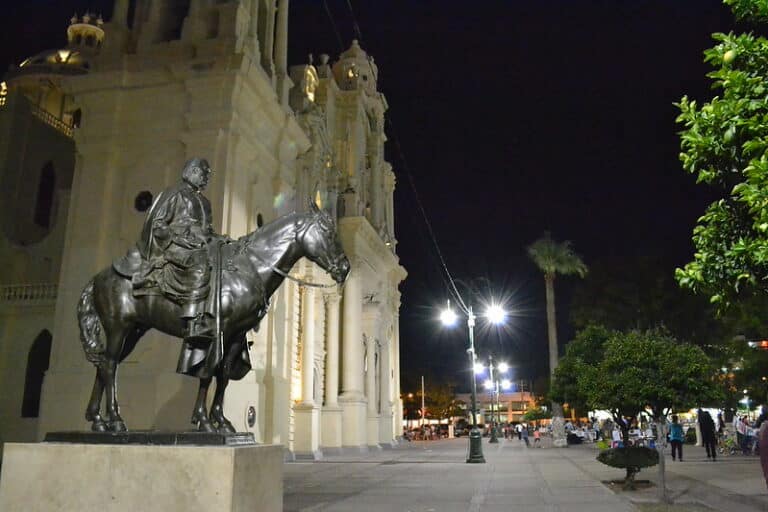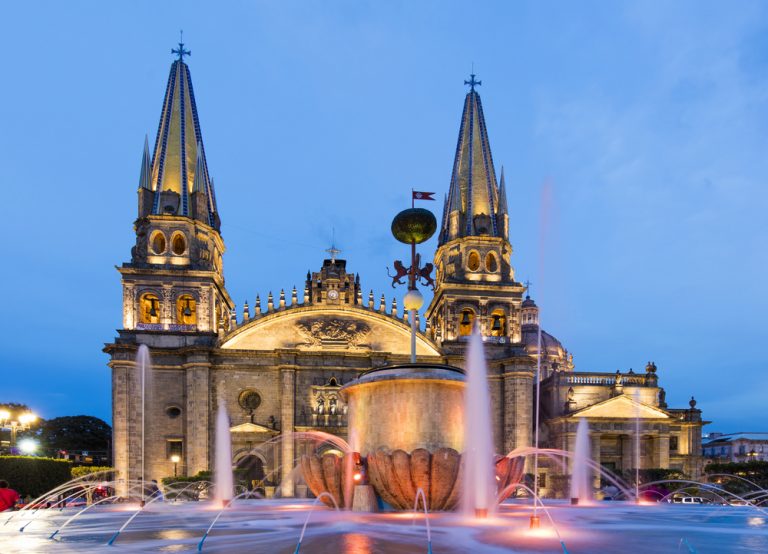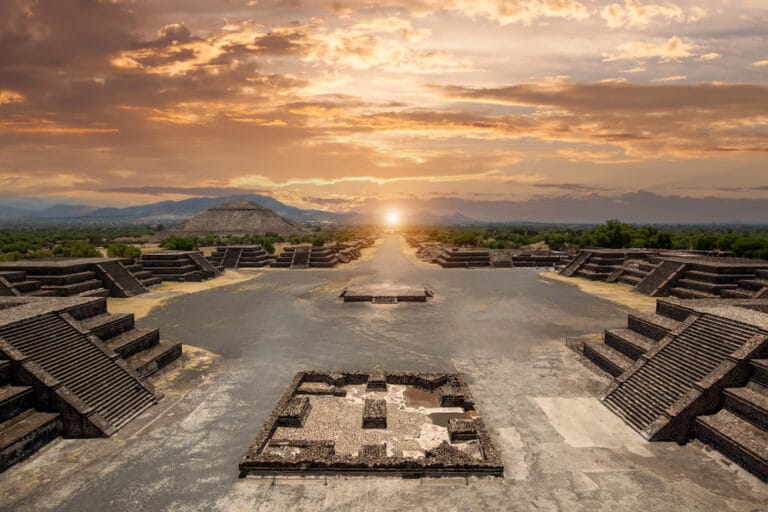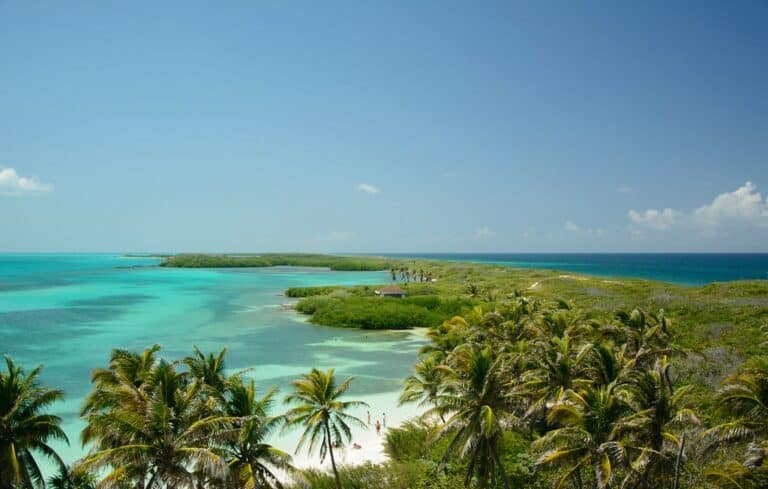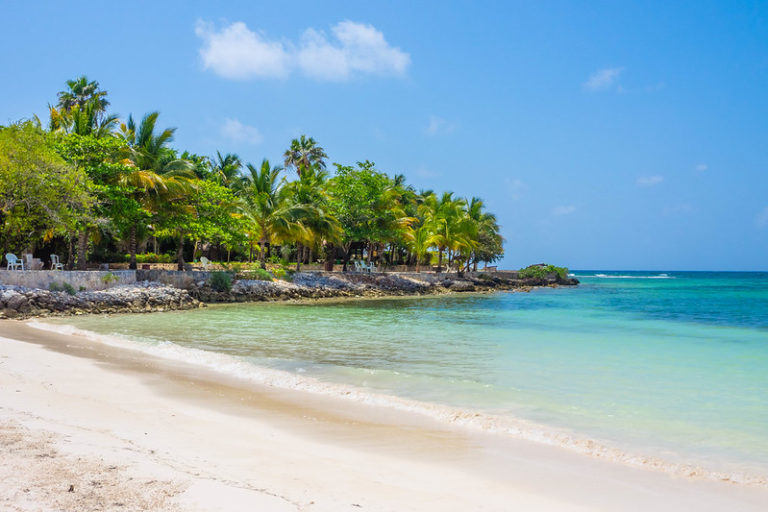Ek Balam Archaeological Marvels: Beyond the Ordinary
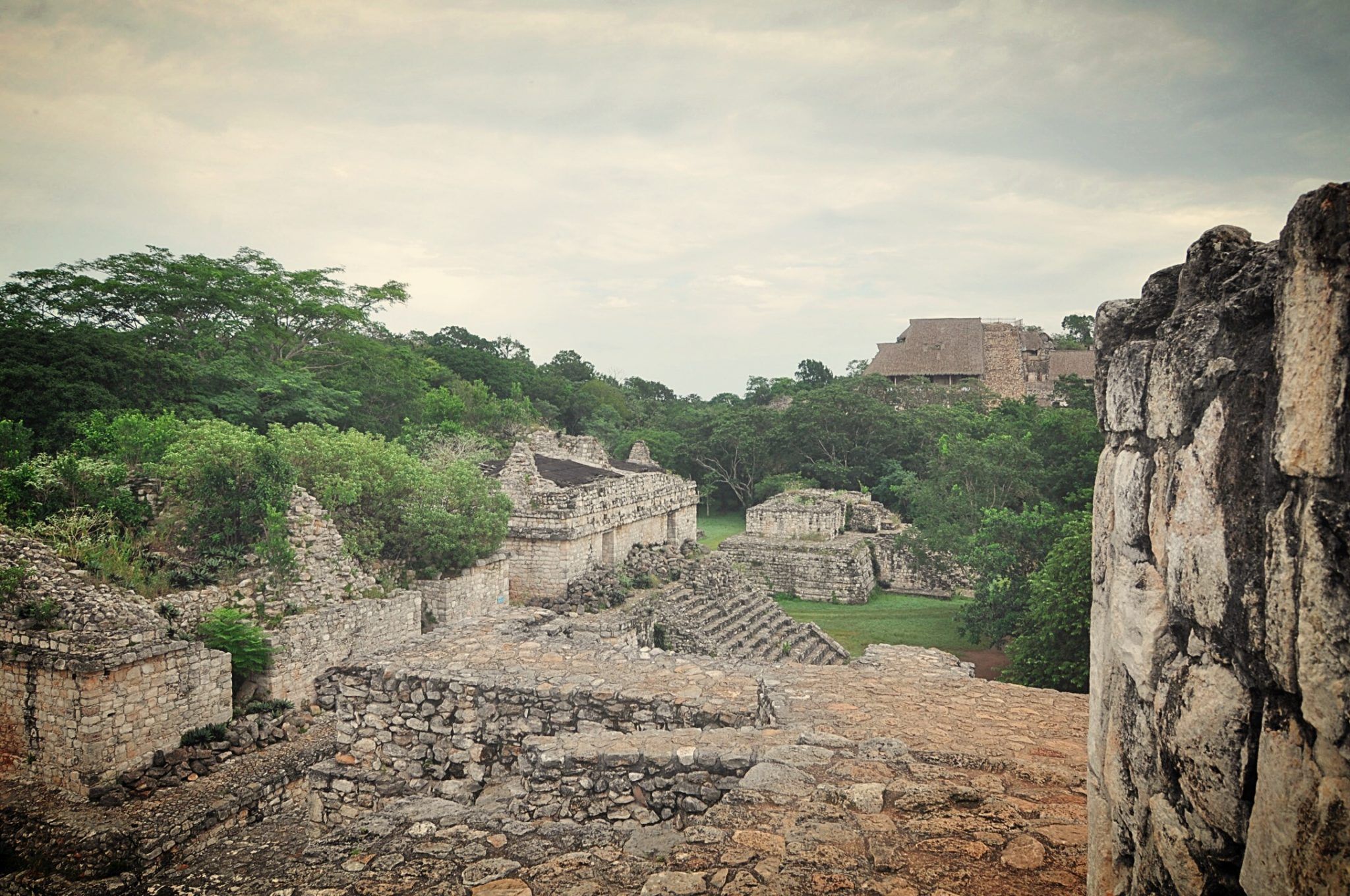
Ek Balam Archaeological Marvels: Beyond the Ordinary
Despite its relatively recent discovery and adaptation for the public, Ek Balam has become, in recent years, one of the most valued sites in Yucatan by archaeological tourists.
There are two versions of the meaning of “Ek Balam,” which comes from the Yucatecan Maya language.
One version, supported by linguists who study indigenous languages, states that “Ek Balam” means “dark or black jaguar.”
However, the indigenous Mayan people who live there and continue to speak their ancestral language also refer to the site as “Lucero-jaguar.”
The discovery of Ek Balam
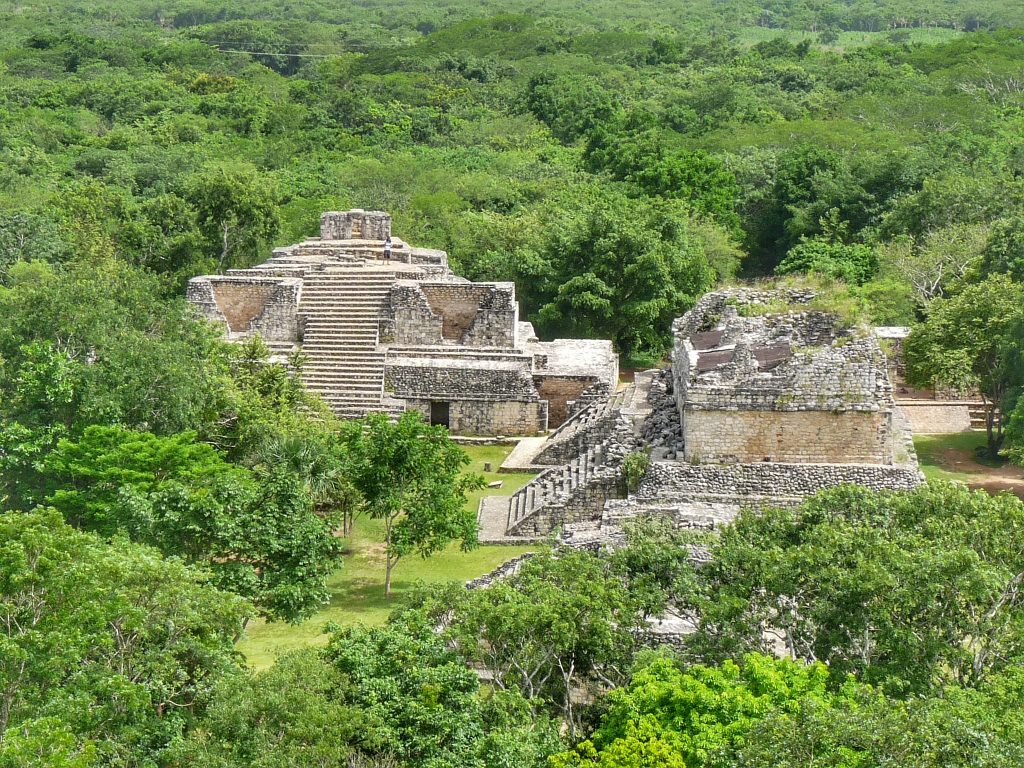
Ek Balam is one of the most recently discovered and investigated Mexican archaeological sites since it was in the mid-1990s when excavation work began.
At the end of the 1980s, the Americans W. Ringle and G. Bey did some archaeological research at the site, pointing out the importance of the inscriptions in Stela 1.
The Ek Balam archaeological project was initiated in 1994 by the National Institute of Anthropology and History (INAH) and continued in 4 stages until 1999.
The first vestige of the site came to light in 1994, a miniature temple inside the walled enclosure.
One of the complexities for an integrated study of Ek Balam is the long period the settlement was occupied.
The first constructive pieces of evidence date from the Middle Preclassic Period, between 600 and 450 B.C.
However, the main buildings have been dated to the Classic Mesoamerican era, during the long period between 250 and 1200 A.D.
From the Postclassic Period, between the XIII and XV centuries, only a few small platforms and small-scale altars and shrines have been rescued in Ek Balam.
Best things to do and see in Ek Balam
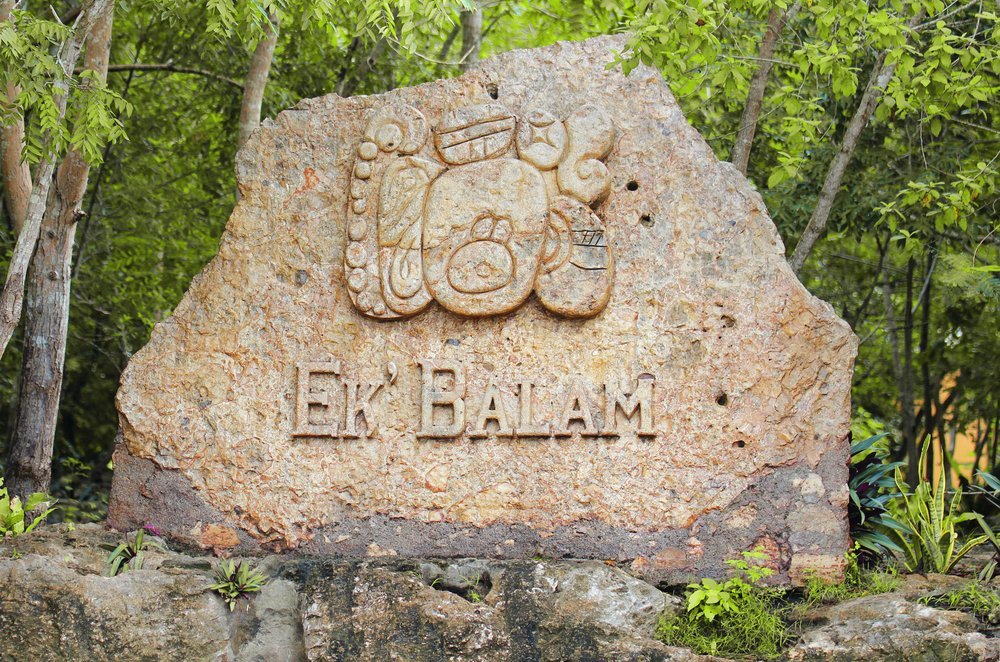
The main buildings of Ek Balam are located in two plazas or esplanades, called Plaza Norte and Plaza Sur, within a walled area where there are other structures around the plazas.
The North Plaza is the largest and oldest archaeological site formed by buildings 1, 2, and 3.
The most important building is 1 called the Acropolis, the largest and tallest archaeological site.
The other two buildings of the North Plaza, 2 and 3, are in the process of excavation.
The other buildings of Ek Balam are located in the South Plaza, the most outstanding being Las Gemelas, the Oval Palace, the Platform of the Stelae, and the Ball Court.
The Acropolis
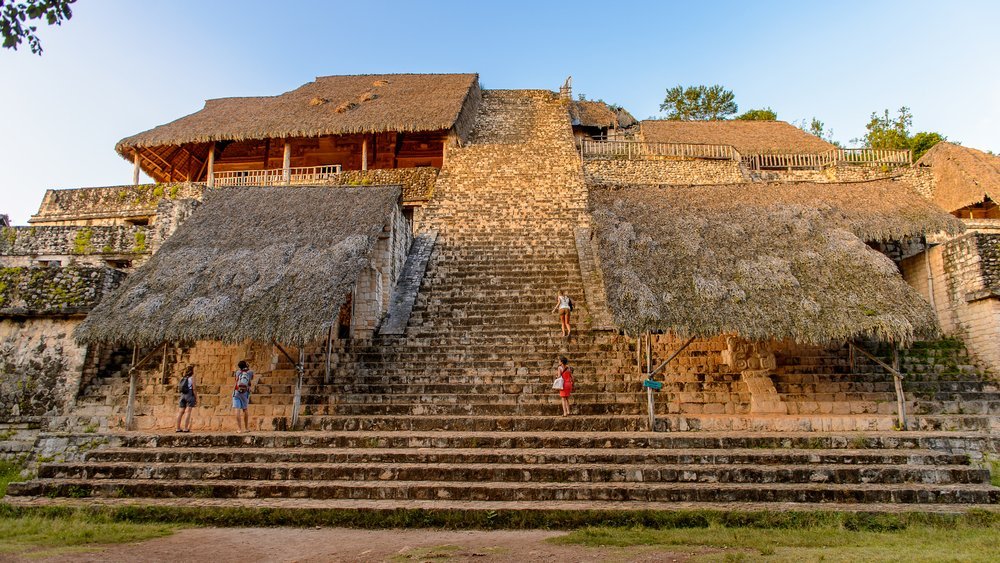
This grand monument, which adopted the name reserved in classic antiquity, particularly the Greek, to designate the highest place of the polis or cities, was the Royal Palace of Ek Balam and had a height of 31 meters and an extension of 160 meters long and 60 meters wide.
The Acropolis is the most significant architectural volume of Ek Balam, which adds an enormous constructive complexity, given the long period used in its conformation.
In the different stages of the construction of The Acropolis, structures were superimposed, with many vaulted rooms distributed on different levels, which communicate through an intricate network of passageways and stairways.
The most important discoveries about the political and artistic history of the pre-Hispanic city of Ek Balam come from the Acropolis.
In this immense construction, stone monuments known as the Hieroglyphic Serpents were found, with several inscriptions, among which the emblematic glyph of Ek Balam is represented.
The glyphs were signs engraved or painted by the Maya, mainly associated with their interpretations of the stars and their movements, and the emblem glyphs were of the utmost importance.
In the stone monuments of the Acropolis, the name of the Mayan ruler, Ukit Kan Lek Tok, the most relevant personage identified to date in Ek Balam, is mentioned.
What stands out in the decoration of The Acropolis?
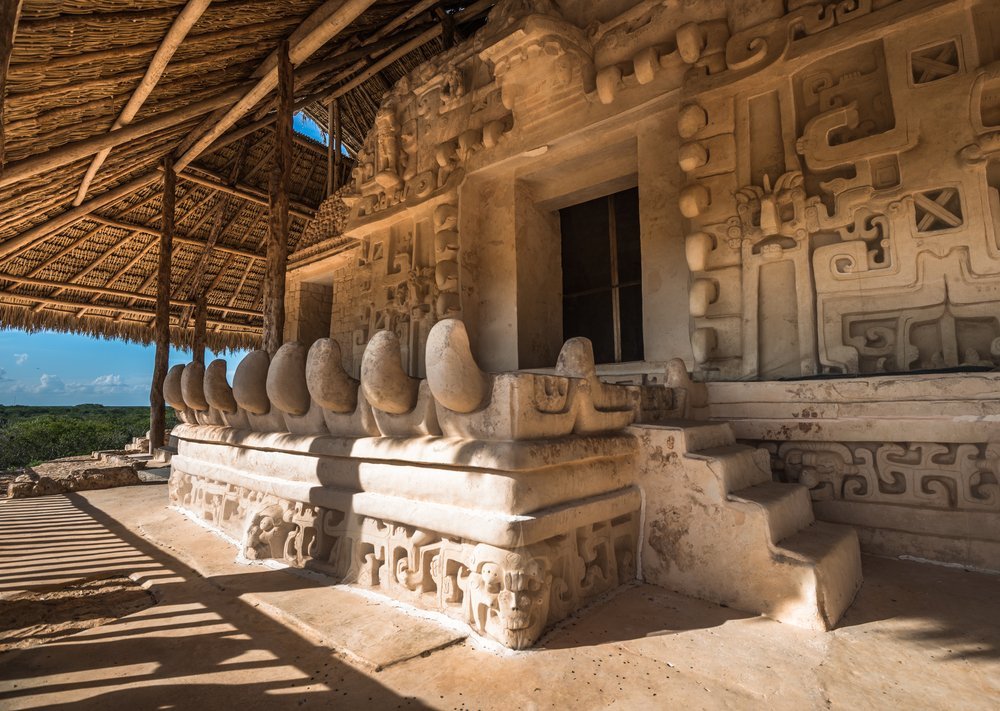
The talent of the Mayan artists who decorated The Acropolis is evident in several complex rooms, even though most of it has been lost due to the deterioration and disappearance of the original stucco.
This artistic originality is palpable both in the carved and painted figures.
Among these magnificent samples of the art of the Mayans of Ek Balam is the frieze of Room 35, which has splendid anthropomorphic images and striking zoomorphic and geometric ornamental elements.
The central stairway that leads to the top of the Acropolis of Ek Balam was built by Ukit Kan Lek Tok.
It is a ritual staircase with the particularity that its steps are of different sizes, with some wider than others.
Some specialists have speculated that the wider steps were to stop to pray or perform some kind of meditative ceremony while ascending to the top.
In any case, visitors are still allowed to climb this staircase, provided they are careful with the particularities of the steps so as not to stumble and fall.
Where did the architects and artists of Ek Balam learn their skills?
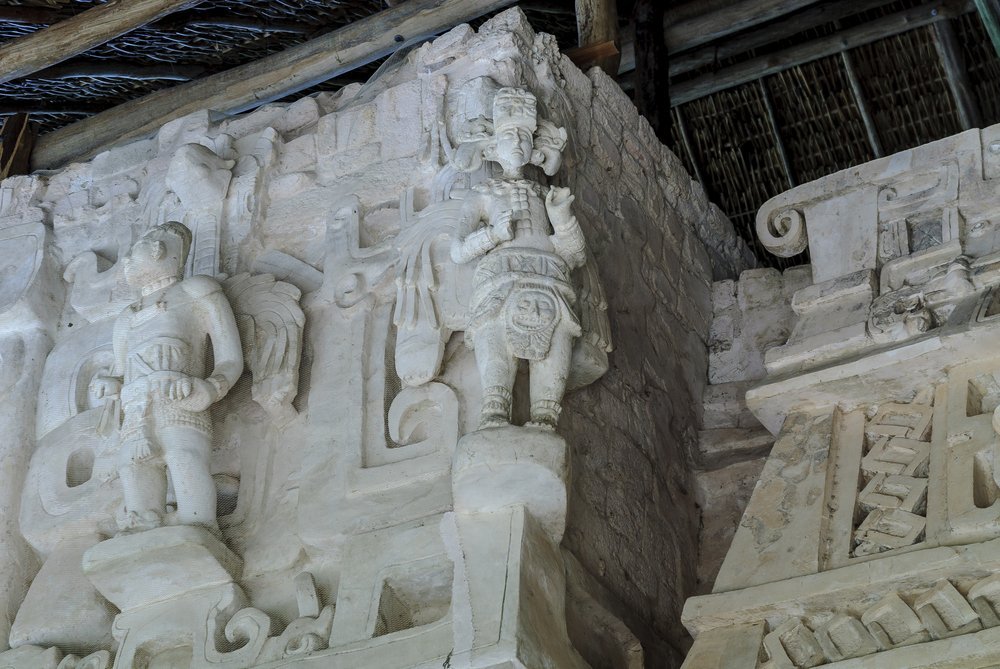
The talented inhabitants of Ek Balam were able to create a unique style in the construction and ornamentation of their buildings, combining a great variety of forms that they managed to express in an artistic personality of their own.
The buildings rescued to date show ornamental elements coming from geographic and cultural regions such as the Petén, the Puuc, the Bec River area, Chenes, Campeche, and the eastern coast of Quintana Roo.
With their skillful mixture of forms, the artists of Ek Balam developed their style, which is seen as singular and not as a simple sum of practices.
Las Gemelas
The Twins are two low pyramids on the west side of the South Plaza and are among the structures at Ek Balam that have best withstood the passage of time.
The group has been identified as structure No. 17 of the archaeological site and is named for the similar composition of the two bodies seated on a common base.
The Oval Palace of Ek Balam
This is another significant construction in the South Plaza, identified as Structure 16 of Ek Balam.
The Oval Palace shows in its profile three constructive stages, receiving its name from the oldest one, integrated by several superimposed bodies in an oval shape.
After the elliptical constructions, rooms were added on three sides and two upper enclosures, probably used as living quarters.
Finally, during the third stage of construction of the Oval Palace, the small temple that crowns the complex was added.
Who occupied the Oval Palace?
Because of the mixed attributes of the building, combining religious and residential uses, it can be assumed that this palace was destined for the high nobility that exercised political and ceremonial functions.
During the excavations of the 1990s in Ek Balam, some burials with offerings were found in the Oval Palace.
Among the burials found was a small child whose remains were placed inside a pot covered with a plate.
This child was offered two earrings and some jade beads that probably belonged to his parents residing in the palace.
The Stelae Platform
The stelae is a stone monument; usually, a monolith raised on the ground, on which commemorative, informative, funerary, religious, or geographical inscriptions are made, capable of resisting the passage of time.
Perhaps the most famous stelae are the Code of Hammurabi.
In this diorite monolith, the Babylonian king Hammurabi had the first body of laws written in the history of humanity in 1750 BC.
Another famous stelae is the Rosetta Stone, a granodiorite monolith made in 196 B.C. in Ancient Egypt, with engravings in three communication systems, whose discovery in 1799 allowed the decipherment of Egyptian hieroglyphics.
Proving that human ingenuity is the same, although there is no communication, the Mesoamerican Indians also resorted to the stelae as a communicational and artistic element, being famous those of Piedras Negras in Guatemala, Copán in Honduras, and La Mojarra in Veracruz, Mexico.
In the South Plaza of Ek Balam was found the so-called Structure 14, a platform with two stelae, the only ones inside the walled enclosure, of which the N° 1 is the best preserved.
In Stelae 1, the Mayan artists of Ek Balam carved two figures in bas-relief, one of which has been identified as that of the ajaw Ukit Kan Lek Tok.
Ek Balam ball games
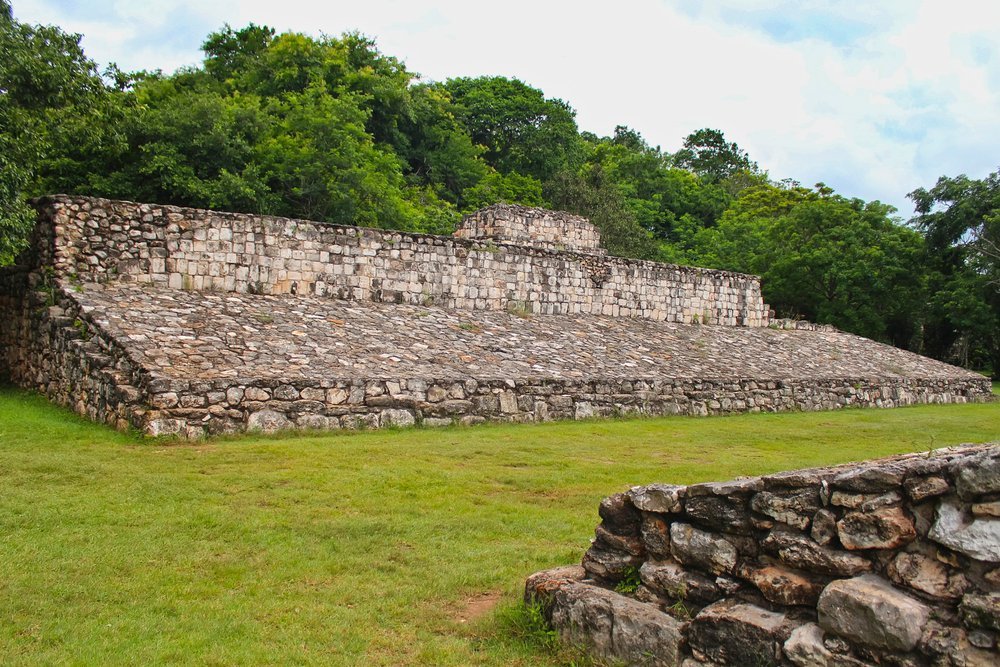
The Maya Ball Game originates in the Myth of the Twins, narrated in the Popol Vuh, the famous compilation of mythical, legendary, and historical stories of the Guatemalan Quiché people.
For the Maya, the Ball Game field was the place of transition between life and death and a battle between the living and the lords of the underworld or the place of the dead.
In Ek Balam, the Ball Court, formed by Structures 8 and 9, is located between the North and South plazas and contains decorated friezes, offerings, and other ceremonial and ornamental elements.
In part of the frieze of one of the rooms of the Ballgame area, decorative elements were found in the modeled stucco, in which blue and red paints were used.
In the frieze’s decorative scene, a human figure on a throne, richly dressed and holding a bird, can be seen.
Likewise, in the Ball Court, two painted vault lids were found with inscriptions indicating that they belonged to Tz’ib’am Tum, probably an ajaw from Ek Balam.
Ek Balam: The walls
The buildings of Ek Balam are inside a double-walled enclosure, receiving these constructions the names “outer wall and inner wall.”
From the perimeter of the outer wall, there are five pre-Columbian roads, called sak be’oob, another element that demonstrates the importance of Ek Balam as a pre-Hispanic town.
Outside the two plazas is a construction, identified as Structure 16, which is believed to have been an important building since sak be’oob N° 2 ends there.
This structure may have been part of the main entrance to the pre-Hispanic city.
Another interior wall, called the third wall, surrounds the central part of the site and the most important buildings. Indeed, this wall was additional protection for the elite people who lived in that area.
Which are the closest cities to Ek Balam?
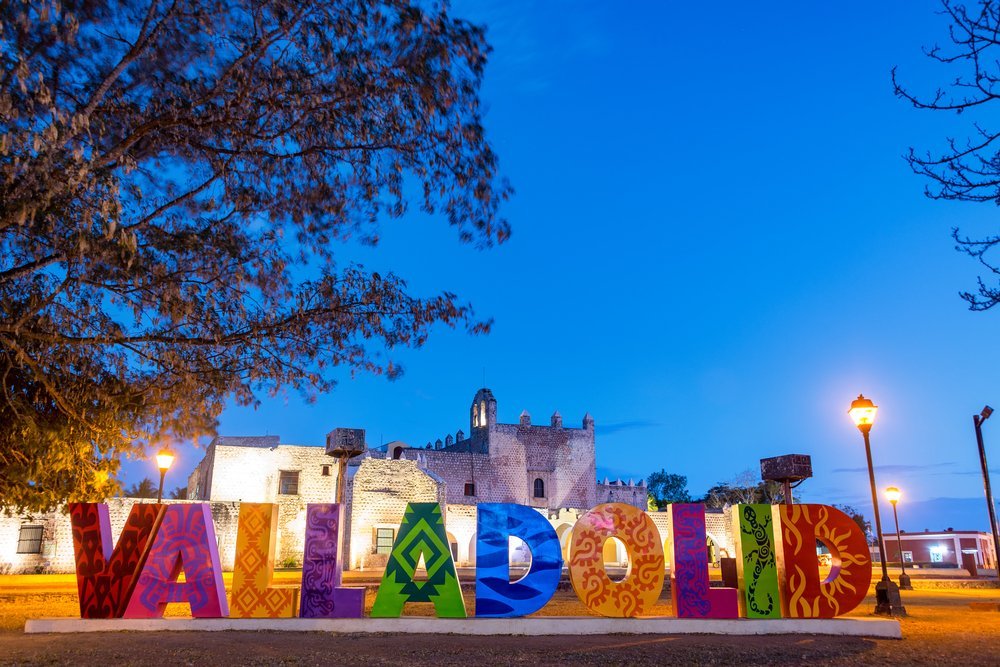
The closest city to Ek Balam is Valladolid, with almost 50000 inhabitants, head of the municipality of the same name.
Valladolid has all the tourist services, both for its proximity to Chichén Itzá (50 km away), Ek Balam, and its attractions as a beautiful colonial city.
Other cities near Ek Balam are Playa del Carmen, Quintana Roo, 156 km away, and Merida, the capital of Yucatan, 175 km away. Cancun is 172 km from Ek Balam.
Climate
With an altitude of only 22 meters above sea level, the climate of Ek Balam is warm, with an average annual temperature of 25.4° C.
The hottest period is between April and October when the thermometer averages 26 and 29° C (75 and 79° F).
In the hot season, the temperature can reach extremes close to 35° C, while the minimum winter temperatures are around 16° C.
Ek Balam receives 1,129 mm of rainfall annually, most of it during a well-defined season between May and October.
How to get to Ek Balam by bus from the nearest cities?
Several bus lines provide transportation from Merida, Cancun, Playa del Carmen, and other locations to Valladolid.
For example, the ADO bus line has trips that leave early in the morning so that you can be in Valladolid around 7 AM.
This allows you to hop around all the attractions in one day, although you will need more than one day to visit Ek Balam, Chichén Itzá, Valladolid, and some cenotes.
By air
Small airplanes land at Kaua Airport from Merida and Cancun, a runway near the archaeological site.
Of course, the plane trip is more expensive, but it can be convenient if you want to optimize your time visiting several attractions since it will allow you to arrive earlier in Chichén Itzá, which is the most congested.
Operators, such as Aero SAAB, provide an integral service that includes transportation, access to attractions, and a specialized guide.
If you choose to go by car, you will have the advantage of stopping at your leisure to visit the cenotes and picturesque towns along the route.
The roads are in good condition, and when you reach Valladolid, you only have to take the road to Tizimín and then cross the town of Temozón.
About 7 km after Temozón, a detour leads to Santa Rita and then another one that goes to Ek Balam.
How much is the entrance fee to Ek Balam?
The site is open to the public all week from 8 AM to 5 PM.
To enter Ek Balam, you must pay two tickets, one for 70 pesos by the National Institute of Anthropology and History and another fee by the Government of the State of Yucatan through its Tax Administration Agency.
Cenotes near Ek Balam
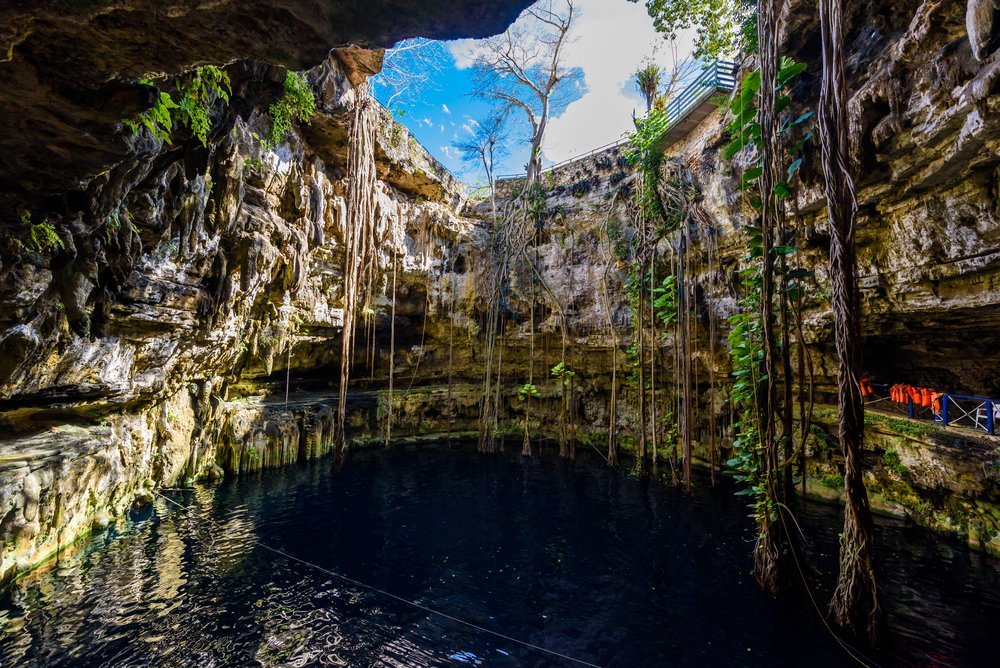
Near Valladolid and Ek Balam, you will have several cenotes to choose from, all of them of singular beauty, among which Zací, Oxmán, Suytún, Xkeken, and Samulá stand out.
The Zací has beautiful turquoise blue waters, and the access to the open-air cenote is through a cave whose ceiling rock formations of whimsical shapes hang.
The vegetation is exotic and exuberant.
Cenote Oxman is another open-air cenote of incredible beauty, whose water mirrors the sun and is reflected marvelously.
The waters are clear and refreshing, constituting a caress for the body after a day of sweating among pyramids and pre-Hispanic monuments. It has a small viewpoint to take spectacular pictures.
The main attraction of Cenote Suytún is the large rocky body that points from above to the center of the water mirror, flanked by other smaller stalactites.
The Seytún was a ceremonial cenote for the Mayas, and its crystalline and shallow waters are home to small fish.
Cabins and a small but exciting museum exhibit archaeological pieces near the cenote.
The beautiful turquoise waters of Cenote Xkeken are shallow, ideal for swimming, and the paradisiacal atmosphere is complemented by the stalactites falling from the cavern’s ceiling.
Access to the body of water is through a hole between the rock formations of the dome, constituting quite an adventure.
Cenote Samulá is another karst formation of incomparable beauty that can be accessed through a stairway, from whose steps you have magnificent panoramic views.
The stairway reaches close to the water level, which invites you to take a refreshing dip and let all the accumulated fatigue of an active day of archaeological site visits flow out of your body.
Valladolid Yucatan main attractions

Valladolid is a city with the official category of Magical Town, with beautiful colonial architecture in which religious complexes, civil buildings, museums, monuments, and parks can be distinguished.
Among the main attractions of Valladolid is the Church of San Gervasio.
In 1703, the so-called Crime of the Mayors was committed when Fernando Hipólito de Osorno and Pedro Gabriel Covarrubias were murdered inside the church on behalf of the mayors Ruiz de Ayuso and Fernando Tovar.
As a result of the crime, the temple was closed and underwent a remodeling in which its main facade was placed to the north, an architectural rarity since Christian churches are always oriented to the west.
Other places of interest you should visit in Valladolid are the former convent of San Bernardino de Siena, the temples of Santa Lucía, San Juan and La Candelaria; Casa-Museo de Los Venados, Calzada de los Frailes, Palacio Municipal, Casa Cantón, and the Museo de San Roque.
Ek Balam lodging
The closest lodging option to Ek Balam is the city of Valladolid, which has a hotel offer that includes Hotel Colonial La Aurora, Casa Marlene, Hotel Posada San Juan, Casa Tía Macha, Hotel Quinta Marciala, and Hotel Candelaria.
On 42nd Street is the Hotel Colonial La Aurora, with two swimming pools, one large and one smaller. The rooms are spacious and comfortable.
Casa Marlene is a small establishment located on 39th Street, distinguished by its impeccable cleanliness and attentive service.
The Hotel Posada San Juan is located on 40th Street and has a colonial atmosphere, with the detail of a hammock accompanying the large bed in the comfortable rooms.
Gastronomy
Valladolid is home to the delights of the main dishes of eastern Yucatan.
The Lomitos de Valladolid is a culinary symbol of the city and is prepared by cutting the pork into cubes mixed with boiled eggs, tomato, and a sauce based on serrano chiles.
Longaniza de Valladolid is another gastronomic icon of the region.
The pork sausage is seasoned with ancho chiles and other ingredients and served with a side of coriander, cured onion, and roasted tomato sauce.
Get souvenirs
In Valladolid, you can buy a souvenir of your trip to eastern Yucatán at Casa Rivero, which offers a good assortment of rugs, tapestries, and ceramic figurines.
Almost all buses going to the archaeological sites in the eastern sector of Yucatán stop in the small, picturesque town of Pisté.
In Pisté, an Itzaes handicrafts stand sells pottery, carvings of various materials, silver ornaments, and other items.
If you drive by Pisté, you can stop to get to know the town, which has some places of interest, such as the temple of San Antonio de Padua and the chapel of Jesus.
Near Pisté are the Balankanché Caves, a system of caverns with artificial lighting and sound, which explain the importance of the place for the Maya people.
The caves have millenary rocky bodies of irregular forms molded by nature.
I hope you find this guide useful. Don’t forget to share your comments below.


